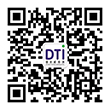- Add to favorite
- Wechat

- Corporate Email
- CN
- EN

On October 1, 2024, the Swiss Federal Tobacco Products Act and the Tobacco Products Ordinance officially came into effect, bringing nicotine-containing and nicotine-free e-cigarettes under unified supervision. The new regulations are based on the EU Tobacco Products Directive, are generally consistent with the EU TPD requirements, and refine the compliance requirements in light of Swiss national conditions. This article comprehensively analyzes the compliance requirements of Swiss e-cigarette products from aspects such as product design, labeling and packaging, registration obligations, taxation and law enforcement.
Nicotine concentrations must not exceed 20mg/mL, and manufacturers must prove compliance through technical standards (SN EN ISO 20714:2022). In addition, the capacity of refillable oil tanks must not exceed 10 ml, and the upper limit of the capacity of disposable e-cigarettes and single-use cartridges is 2 ml. Disposable products are not prohibited at the federal level, but Basel, Jura and other states have disposable bans.
E-liquids (with or without nicotine) must ensure "high purity", that is, contain only declared ingredients, except for trace impurities that cannot be avoided during the production process. The regulations explicitly prohibit the use of 25 harmful ingredients (listed in Annex 1), such as certain carcinogens or additives that may enhance toxicity. CBD (cannabidiol) is allowed to be added to e-liquids, but the THC content must not exceed 1%. E-liquids must not contain other addictive or psychoactive substances besides nicotine.
• Meet child protection standards (SN EN ISO 8317:2016 or SN EN ISO 28862:2023) and have leak-proof function.
Nicotine concentration must be clearly marked at all points of sale, and non-removable stickers are allowed to supplement the information.
The warning text must be in Helvetica Neue LT 75 Bold font and occupy 35% of the lower area of the most conspicuous side of the package (if the side exceeds 75 square centimeters, the warning area is at least 26.25 square centimeters). In addition, all products must state "Not recommended for minors and non-smokers".
The packaging must be accompanied by a multilingual instruction sheet, including a list of ingredients (in descending order of content), instructions for use and storage, contraindications, warnings for risk groups and manufacturer contact information. If the information is not printed on the packaging, an electronic version must be provided through a neutral website or QR code.
In the event of a major change in product ingredients or brand, the registration information must be updated within two months.
Products that have been on the market before October 1, 2024 can enjoy a one-year transition period to complete registration. Non-compliant products (such as those with unqualified labels) are allowed to continue to be sold during the transition period until the stock is cleared.
Importers or manufacturers must register with the Customs Tobacco and Beer Tax Department (TABI) in advance (cost 50 Swiss francs).
• Conduct test purchases by minors to verify the implementation of age restrictions.


 Shen Gongwang Security: 44030602006947
Shen Gongwang Security: 44030602006947
报价二维码